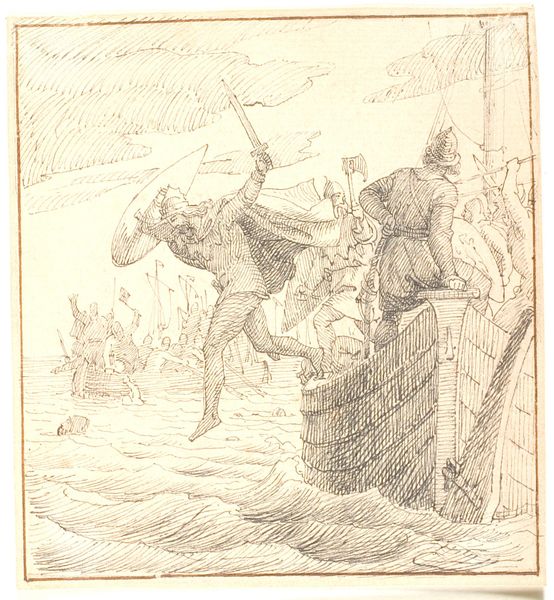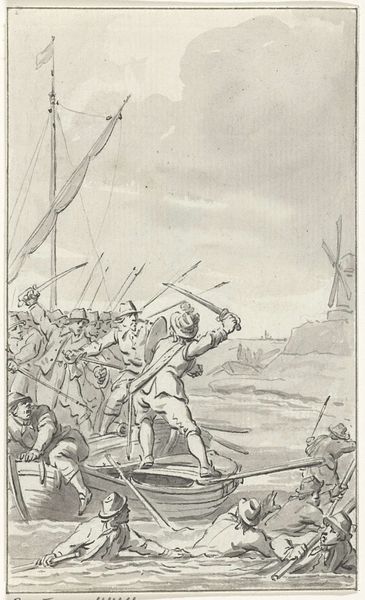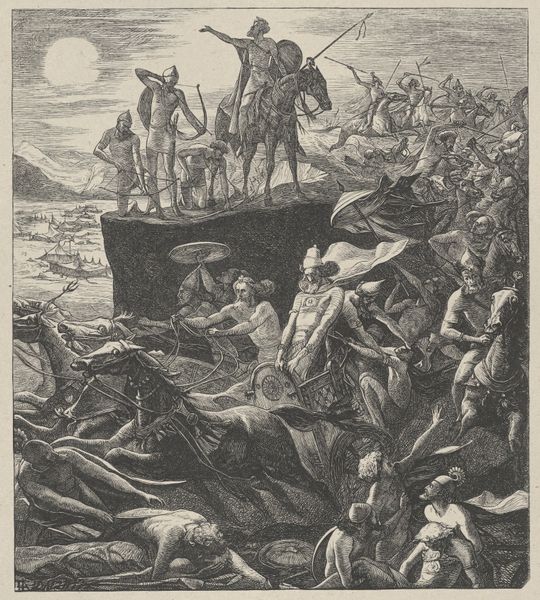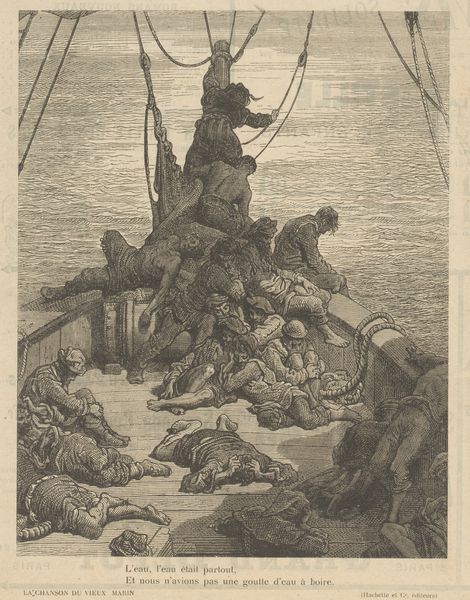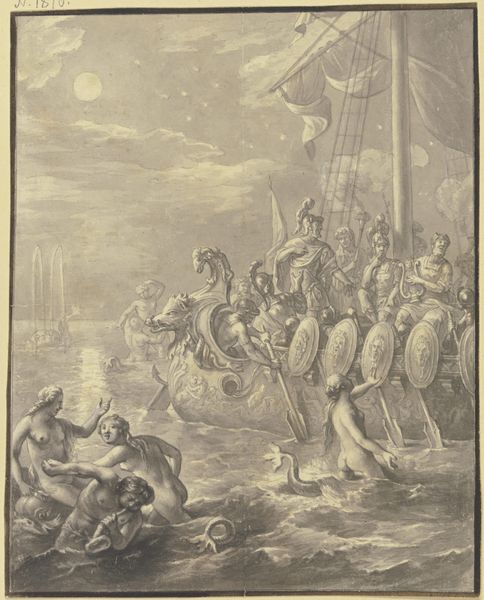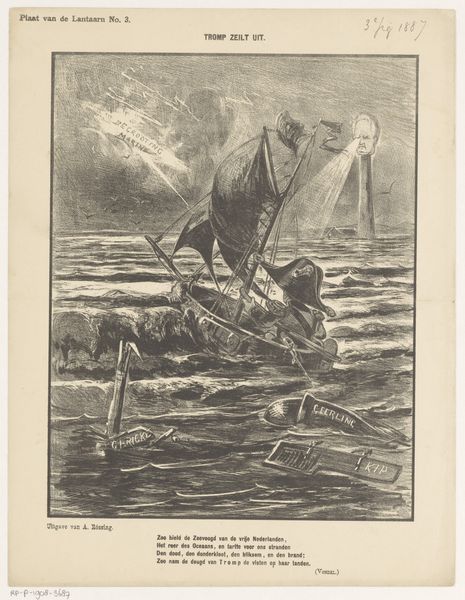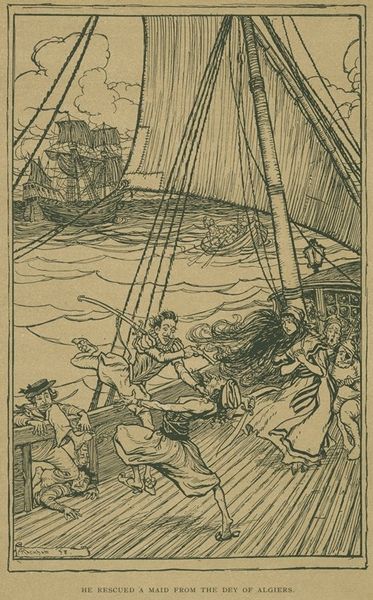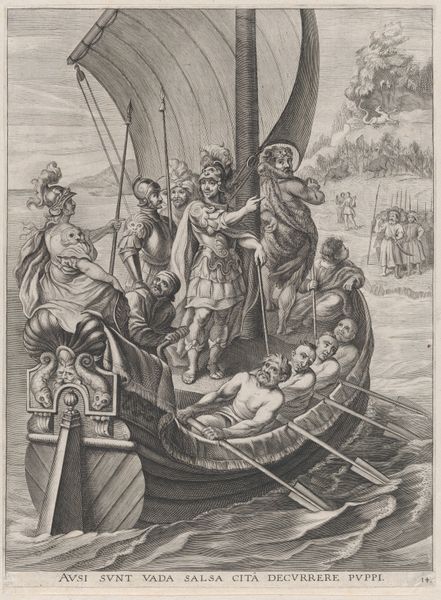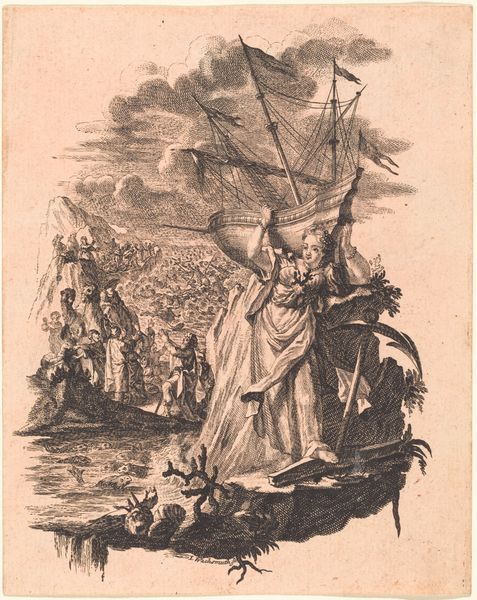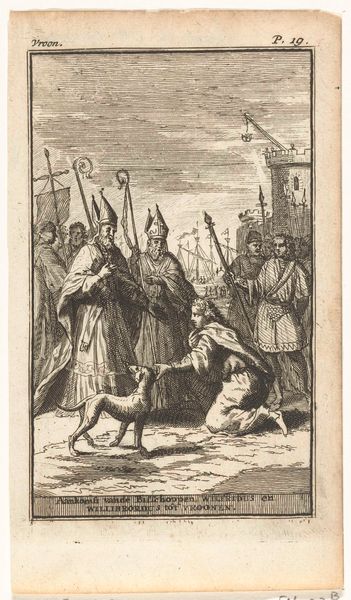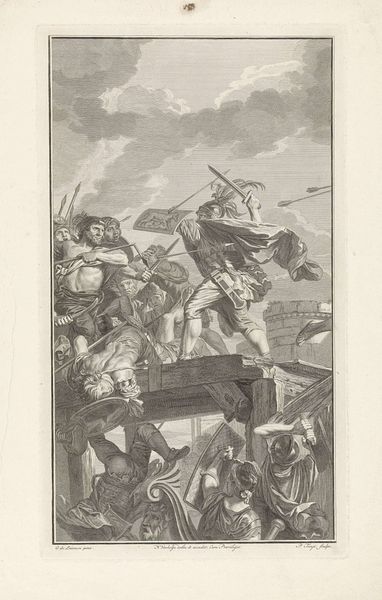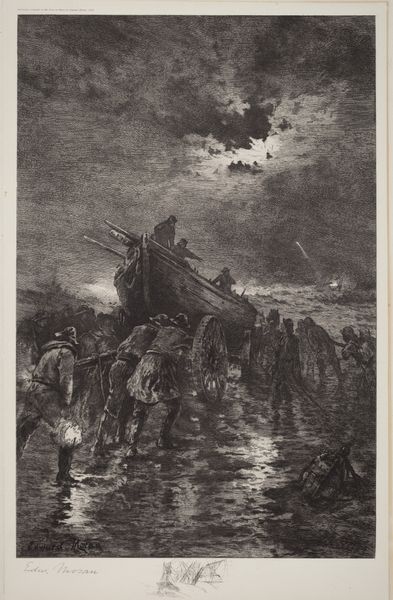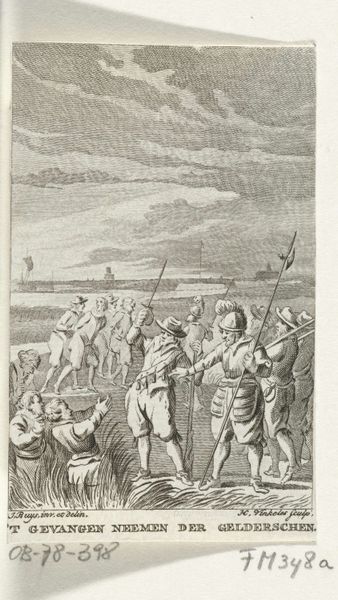
Illustration til "Svend Tveskægs tog til England og slaget ved Svold" 1853
0:00
0:00
drawing, print, ink
#
drawing
#
medieval
#
narrative-art
# print
#
ink
#
history-painting
Dimensions: 104 mm (height) x 95 mm (width) (bladmaal)
Curator: This ink and print drawing from 1853 is entitled "Illustration til "Svend Tveskægs tog til England og slaget ved Svold"", a narrative piece depicting a Viking battle at sea. Editor: It certainly has an immediacy to it; the chaotic energy of battle seems to leap off the page. The artist's hand is very evident in the lined and cross-hatched execution. Curator: Absolutely. Considering its historical context, we can interpret this illustration as part of a 19th-century Romantic fascination with the Viking Age, connecting it to broader nationalistic movements emphasizing a glorious, imagined past. This glorification, however, is complicated, especially when examining its portrayal of violence and power dynamics. Editor: From a materialist lens, what strikes me is the way the artist uses simple ink and printmaking techniques to create the texture of the wood on the ship, the movement of the sea, and the fabrics. It reduces the process of making a statement about power and conquest to fundamental labor. Curator: Precisely! The artist seems interested in heroicizing Viking leaders, almost removing individual agency by painting all people the same. This is, obviously, complicated and might be read today as both empowering and reductive by flattening nuances of culture. Editor: The materiality lends it a roughness that’s quite appealing. It suggests that narratives, like constructed ships, come from layers of process and manual labor, regardless of their cultural significance or role in nationalist discourse. Curator: I think your point beautifully illuminates how historical narratives are also constructed, revised, and performed through physical artifacts and illustrations. These illustrations participated in shaping societal imaginaries and identities, both affirming and contesting various socio-political power systems. Editor: Looking closer at how the repetitive marks of the medium coalesce into distinct shapes of the ship and violent men really makes one consider the hands that created that illusion through simple tools. I found myself drifting beyond what’s being represented to how it was made. Curator: Yes, and in understanding these histories as fundamentally contingent and constructed, perhaps we can work toward dismantling inequitable structures reproduced by the original creator. Thank you, I feel like this new awareness really reframes how I’ll understand illustrations going forward!
Comments
No comments
Be the first to comment and join the conversation on the ultimate creative platform.
